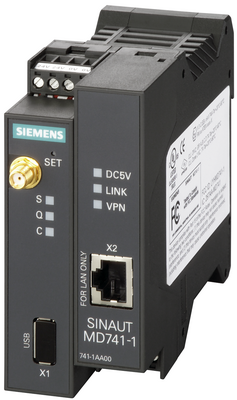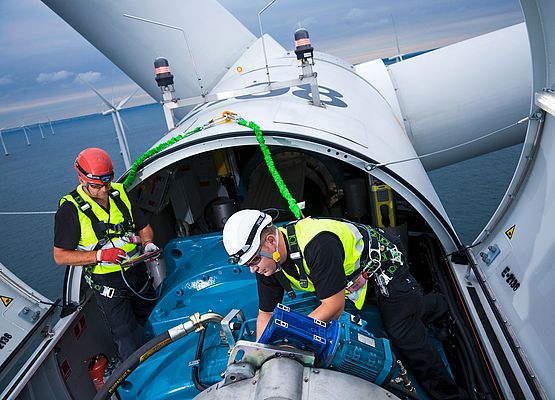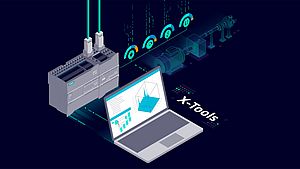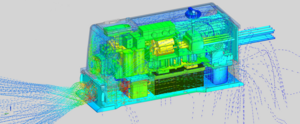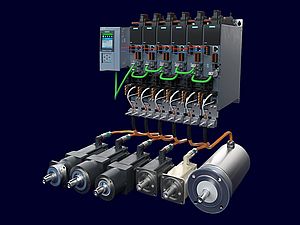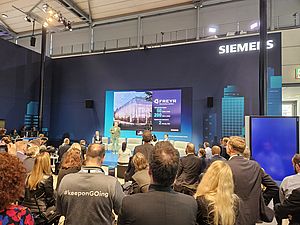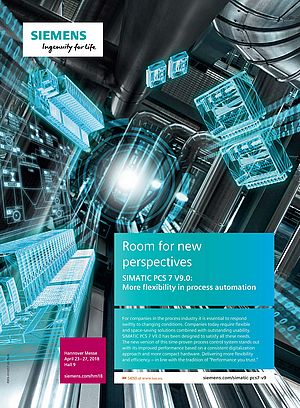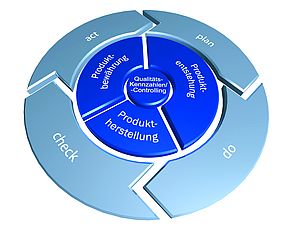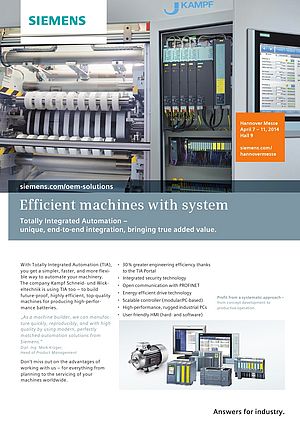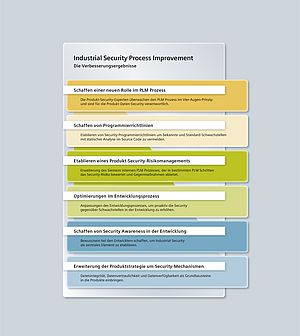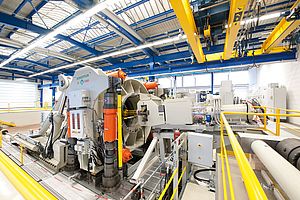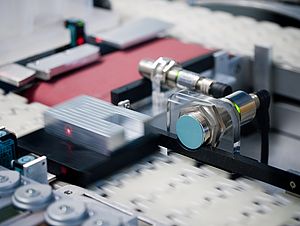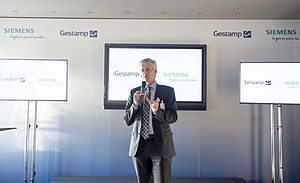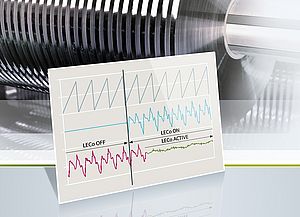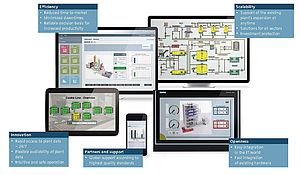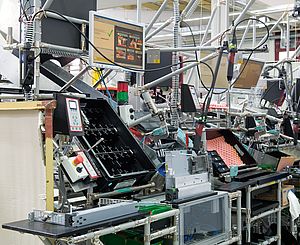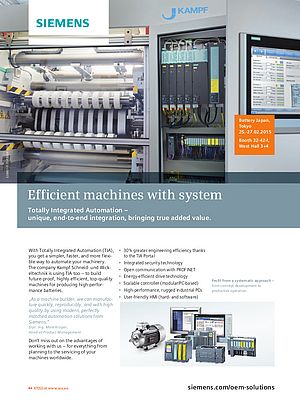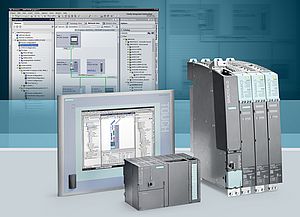There is a special need for telemonitoring in many applications today. Wireless communication via the GSM network makes it possible to realize economic benefits in the form of lower installation costs, higher data transfer rates, and a high level of data transfer security.
Packet-oriented transmission services such as GPRS are today no longer associated only with mobile Internet connection via radio telephone. This wireless service, based on the GSM network, plays an exceptional role particularly in the area of telecontrol. In many plants, there are no private lines or telephone connections available for process data communication. Retrospective installation would be too expensive or impossible due to prevailing geographical conditions, as in the case of older wind farms or mobile applications such as container monitoring. Wireless solutions requiring a license, such as the use of wireless telecontrol in the 448-MHz band, often fail on the basis of the distance involved, or they require increased investment in infrastructure (transmission masts, lightning protection measures, etc.) due to the topology profile, so that in most cases they do not offer an alternative either. The same applies to an even greater extent to license-free wireless solutions whose susceptibility to interference from, for example, other wireless nodes rules out their use for transmission over longer distances with increased availability requirements.
In all these cases, GPRS – a service that uses free GSM capacity for packet-oriented data transfer – is the suitable transmission medium for telecontrol tasks or the centralized monitoring of plants. The benefits are obvious: After all, with a market share of 85%, GSM networks cover 80% of the world’s population in 220 countries (Source: www.gsmworld.com), so investment in proprietary transmission networks is not only unnecessary, but also economically unjustifiable.
Cost benefits of GPRS
In contrast to data transmission via the CSD service (modem mode) within the GSM network, GPRS is charged by volume and is thus independent of the high charges arising from frequent connections or long transmission durations. Specific M2M (machine-to-machine) tariffs are usually selected in the case of GPRS. These enable low-cost and continuous online connection without troublesome connection buildup times. However, to avoid excessively high data volumes and the associated added costs, it is necessary to use efficient protocols and event-oriented data transmission procedures instead of cyclic data transmission procedures.
In Germany, many network providers offer a data volume of 50 MB for around 10 euros per month, and this trend toward falling provider costs continues. GPRS is thus the most favorably priced 24-hour online connection.
VPN security without added cost
With a typical mobile phone Internet connection via GPRS, communication is unidirectional: Internet pages are sent to the mobile phone at the request of the mobile phone user. Internet access to the mobile phone is blocked by the mobile phone provider’s firewall. Telecontrol requires the option of unprompted access to the GPRS node from the control center, but this is not necessarily possible.
Nevertheless, in order to put forward the option of bidirectional data communication, some providers offer virtual private network (VPN) solutions. But these entail separate contracts that also include further services such as the coordination of IP addresses. And this leads to additional monthly costs that make this solution unattractive in many cases.
Use of the MD741-1 GPRS router from Siemens is a cost-effective solution. This device makes it possible to establish a permanently online VPN beyond the NAT gateway and the firewall of the mobile wireless provider, direct and easy to handle – that is, without additional provider services and using commercially available SIM cards. This allows bidirectional communication between two nodes.
Bidirectional communication is used, for example, in “condition monitoring”: Not only is the control center supplied with data, but the measured values in the monitored process stations can also be recorded at shorter intervals, especially in the case of significant changes, enabling fast and selective response to those changes. Such status-oriented monitoring is important especially in those cases where plant standstills would result in greater economic damage and must therefore be avoided.
Increased data transfer rates
The data transfer rates that can be achieved with GPRS are a special benefit. While data rates of approximately 9.6 kbit/s can be achieved with the CSD service within the GSM network, the theoretical rates with GPRS can go as high as 107 Kbit/s (8 x 13.4 kbit/s). However, the channel enable restrictions of the GSM providers mean that in most cases, data rates comparable with those of an analog modem are to be expected. Expansion of GPRS through the introduction of additional modulation procedures, known as EDGE or EGPRS, increases the data transfer rates of GPRS by a factor of four or five. Experience shows that the speed of EDGE is even higher than that of UMTS connections in insufficiently covered areas. In contrast to UMTS, EDGE is also available almost everywhere in the world. In a few countries, such as Germany, many mobile phone providers offer only the normal GPRS instead of EDGE (EGPRS) in conurbations supplied by UMTS. The MD 741-1 GPRS router from Siemens is already set up for the higher transfer rates and can handle both GPRS and EDGE (EGPRS).
Data security
Given the potential hazards of the Internet, data security naturally plays a crucial role. In particular, connections for exchanging process data in automation applications must be protected by VPN technology against manipulation from outside. Data security on the MD 741-1 GPRS router is guaranteed by the IPsec security protocol. This standardized procedure encrypts all the data traffic handled via a VPN tunnel by means of authentication procedures. This highest security level virtually rules out the danger of data manipulation.
Telecontrol at Siemens Mechanical Drives (previously A. Friedr. Flender AG)
As with many other companies, wireless telecontrol is becoming increasingly significant for the Mechanical Drives Business Unit of Siemens AG. This company is one of the leading manufacturers of components for mechanical and electrical drives. The Service International Division offers services for these components. This involves predominantly maintenance work and analysis of the problems of gear units, including gear units in wind turbines. The range offered by the service provider includes mobile measuring elements, telediagnostics services for vibration-based status monitoring of the gear units, and temporary troubleshooting elements for problem analyses with mobile measuring systems.
The problem
Today, Internet access via telephone lines is guaranteed on larger wind farms to a great extent. However, many wind farms in the lower performance classes will not be retrofitted with “condition monitoring” until after the service contracts with the manufacturer have expired and the plant operator assumes responsibility for their maintenance. Thanks to the continuous measured data recording of the condition monitoring systems, machine failures are now becoming predictable. However, individual wind turbines or smaller wind farms often have insufficient communication connections. Telecommunications companies do not provide lines all the way up to the pod of the wind turbine, so the need for wireless data communication is especially great here.
The solution: GPRS
With the MD 741-1 GPRS router, Service International offers a wireless Internet connection that is independent of the plant operator, together with clear cost allocation for this communication channel. Installation of the communication system and the VPN is extremely simple, so parameterization can be carried out using the Scalance S Security Appliance without the need for specialist IT personnel (www.siemens.com/simatic-net).
Continuous and low-cost, status-based maintenance by means of condition monitoring is made possible despite the poor accessibility of many sites. Thanks to the EDGE technology supported by the MD 741-1, the achievable data transfer rates are more than sufficient for the application. The high level of data security in the VPN is also decisive for Mechanical Drives. This is guaranteed on the MD 741-1 by IPsec.
Test run
The application was tested by Service International in the spring of 2008 over a period of three weeks on a wind farm near Hannover, Germany. The MD 741-1 GPRS router and the Scalance S612 Security Module were used as the main components. Thanks to the shared configuring tool, it was relatively easy to set up a VPN tunnel between the station and the control center. Online access was guaranteed over the entire period and no data losses were detected.
The MD 741-1 is currently in use in a temporary condition monitoring system for a plastics extruder. In general, Service International sees potential use wherever Internet connection over the telephone line is not possible, or in troubleshooting applications. Troubleshooting applications require only the temporary setup of a diagnostics system over a period of 4 to 12 weeks, for example, if mechanical problems are suspected in a system but permanent online monitoring is not necessary. In such cases, Service International will continue to back the GPRS application with the MD 741-1 in future.
Customer benefits
Use of the MD 741-1 makes Service International independent of the availability of telephone lines. Simple installation and the combination with Scalance S mean the application is ready for operation at extremely short notice. Data security is also provided by the IPsec security protocol already integrated into the MD741-1 EGPRS router. Since the integrated function of IPsec means users are not restricted to just a few mobile wireless providers, the flexible choice of GPRS providers and tariffs in the national and international market offers an additional economic advantage. The international approvals of the MD 741-1 are a further decisive factor in the global use of this monitoring system. (http://support.automation.siemens.com/WW/view/de/24795895)
Other potential uses of the MD 741-1
Telemonitoring via GPRS is also in use, or could conceivably be used in future, in many other sectors, such as wastewater treatment plants, traffic control systems, machine tools, solar power systems, or biogas systems. In large drinking water and wastewater treatment systems, the installation of additional GPRS links is common practice as a backup in the event of the failure of data transmission lines. Telemonitoring with GPRS is also used increasingly in mobile applications such as the monitoring of containers or complex construction machinery.
Authors: Sara Kretschmer, Siemens Industry Automation, Nuremberg, Germany Dr.-Ing. Jörg Deckers, Siemens Drive Technologies, Diagnostics Expert, Voerde, Germany


